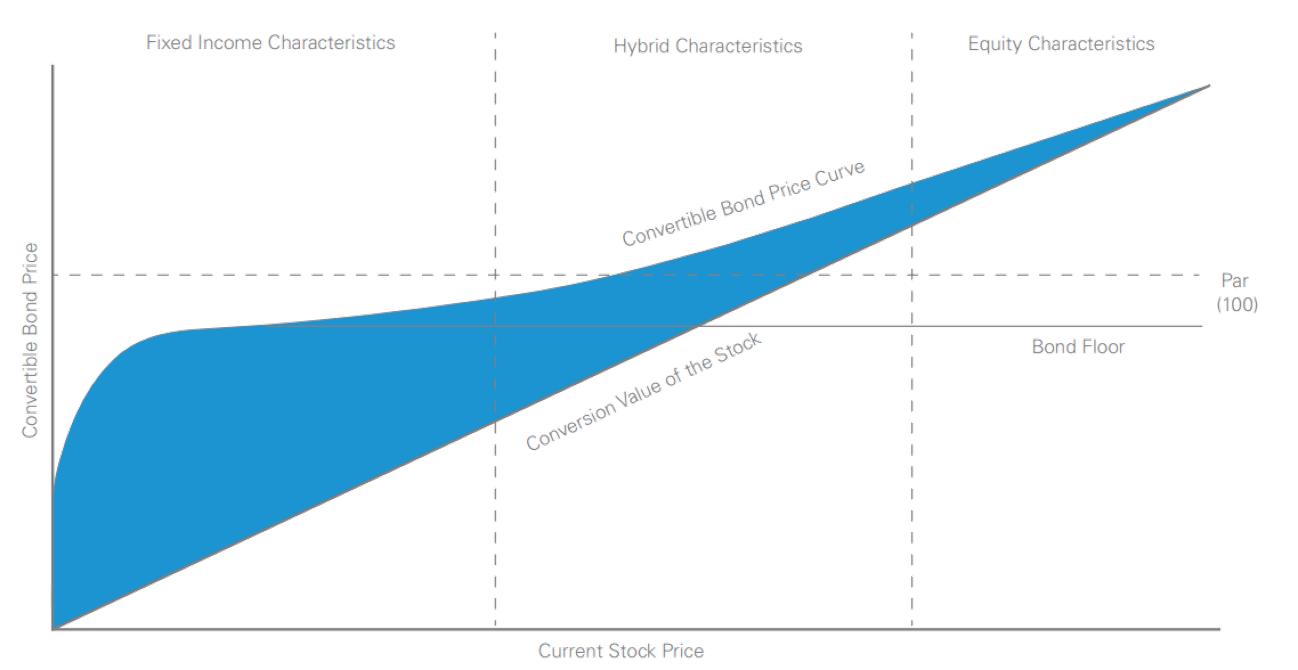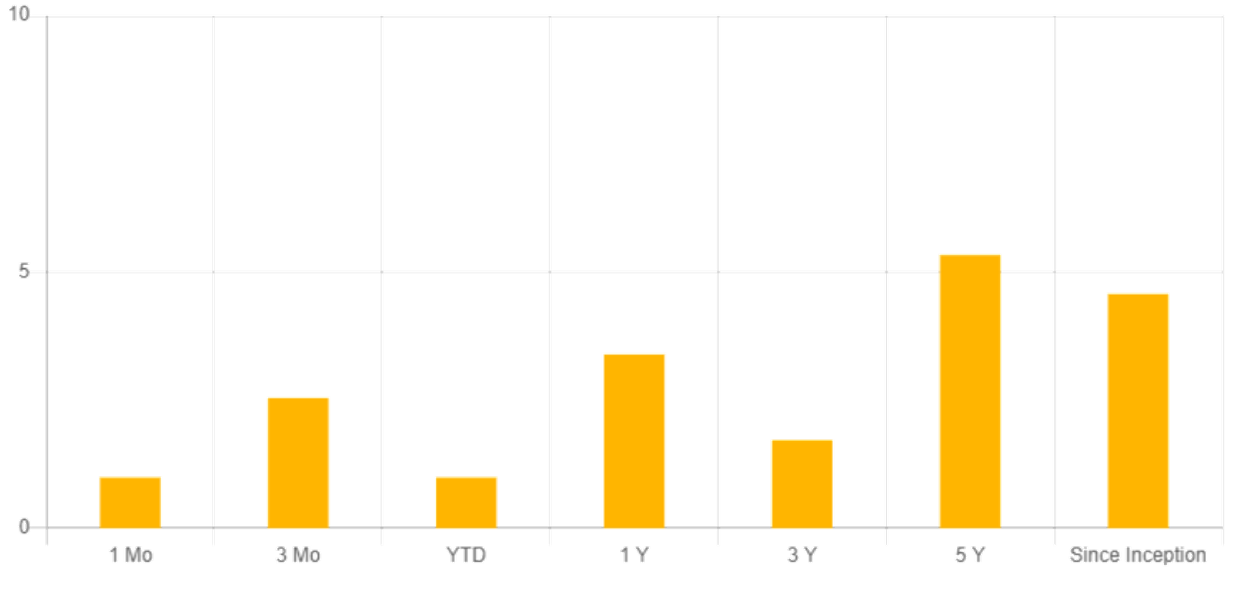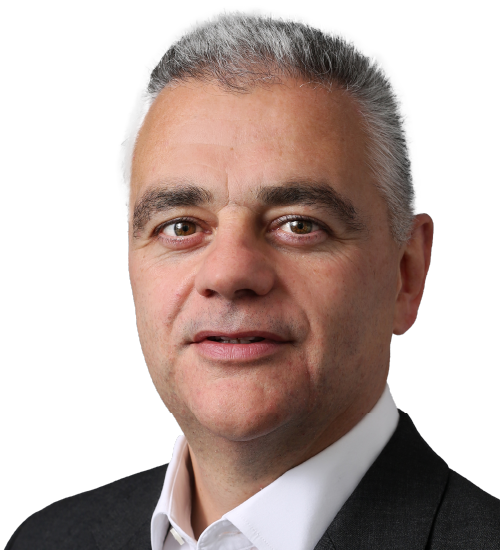Investment conditions

Growth (economic)
Inflation appears to be under control, the global economy remains resilient. Many economies are slowing but assessment of recent growth, employment markets, corporate profits, and forward looking economic indicators, give us confidence that slowdowns appear manageable, and the outlook has been improving.
The key issues investors are grappling with are economic ones: is inflation under control? Are economies holding up? Will we see recessions, and if so where, and what shape will they take? Will geopolitical tensions worsen the outlook? What do these mean for the path of interest rates and what investments are likely to prevail?
Taking these in turn, inflation appears to be under control in most major economies, consumer price rises have slowed significantly over the last year for most regions. Consumer Price Indices (“CPI”) readings show USA 3.1% current (6.4% a year ago), Britain 4% current (10.1% a year ago), Euro area 2.8% (8.5% a year ago), Japan 2.6% (4% a year ago). China is now in deflation with -0.8% current (2.1% a year ago) but recent Chinese policy should provide a lift. Note however, that lower positive numbers still indicate higher prices, but the evidence shows that the speed of price increases has slowed significantly, indeed when paired with other inflation readings (CPI isn’t the only measure), inflation appears to be under control for now.
Despite continued (but slower) price rises and lingering geopolitical tensions, most economies are holding up. Gross Domestic Product (“GDP”) readings essentially quantify how much stuff is produced and sold in an economy in a given period (services as well as goods). GDP readings show a mixed bag, but in the main are significantly stronger than many predicted would now be the case. Selected recent GDP readings are: USA 3.1% current (1% a year ago), Britain -0.2% current (0.4% a year ago), Euro area 0.1% (1.9% a year ago), Japan 1% (0.6% a year ago), China 5.2% (2.9% a year ago).
Looking ahead, the IMF expects global growth to fall from an estimated 3.5% in 2022 to 3% in 2023 and 2.9% 2024, below the historical (2000-19) average of 3.8%, but positive growth nonetheless. It forecasts emerging and developing economies to grow more quickly than this, at 4.1% (2022), 4% (2023) and 4% (2024).
Unemployment remains at or near historic lows in the USA (3.7%), Britain (3.8%), Euro area (6.4%), Japan (2.4%), and China (5.1%). Labour markets remain strong in our view.
Leading indicators are used to forecast future economic activity, one of the most popular being Purchasing Manager Indices (“PMIs”) which are monthly surveys of business executives who make orders for their companies. Readings below (above) 50 indicate economic contraction (expansion).
The latest PMIs for various regions are Global (50), US (51), UK (47), Japan (48), Europe (46), Emerging Markets (51). All these numbers have increased or stayed the same since the previous committee meeting two months ago. The data agrees with other readings we follow, supporting our view that economic conditions continue to improve, economies appear to be slowing but in a measured and manageable way, so recessions are likely to be shallow or avoided.
Geopolitics continues to present a risk. The committee acknowledges a lack of informational advantage in this area, it doesn’t pretend to know what will happen. For now, economic impacts appear to be known and manageable on a global basis, even if very damaging in some isolated cases. We remain watchful and ready to respond to emerging threats.
Interest rate & liquidity environment
Most major economies have been raising interest rates in an attempt to cool inflation. However, interest rates are not expected to move much higher because inflation has been falling. The committee thinks the worst of the hiking cycle is behind us. That said, the risk of a policy mistake by central bankers is elevated in our view. Reduce rates too soon and inflation could rise again, as was the case in the 1970s/80s. But keeping rates too high for too long could damage companies and consumers with high debt levels. This is a difficult balancing act, especially since the impact of higher rates generally takes 12 to 24 months to be felt. Chinese policymakers have recently provided substantial support, easing conditions, boosting liquidity (and therefore growth and inflation, both within China but also its trading partners).
Valuations & earnings outlook
At the global level, corporate earnings have been resilient, and higher than expected in many areas. Global profit margins have remained robust, despite rising prices and borrowing costs.
US companies remain significantly more profitable than other regions. Corporate earnings in the United States recently reached an all-time high, and analysts expect robust earnings growth next year (+9.6%). Earnings in the UK have been falling (-13.4%) but analysts currently expect a modest recovery next year (+3.4%). For other developed markets, Japan is a standout performer for profitability, with corporate earnings expected to grow 11.7% this year. Earnings within emerging markets earnings fell in 2023 (-3.9%), but analysts expect a strong recovery next year with +16.4% expected earnings growth for 2024.
The US stock market is the only major region that is meaningfully overvalued compared to history, investors are prepared to pay more for companies listed in the US in general, and especially for those expected to profit most from new technologies (e.g. artificial intelligence). The UK stock market is very cheap compared to history, trading about 20% more cheaply than its 10-year average (price to earnings ratio).
Assessing the value of different asset classes compared to historical patterns indicate that investors are now pricing in a lower probability of recession than previously, which in the committee’s view is supported by the data. However, many assets are still trading significantly more cheaply than others, for example smaller company stocks (especially the UK and mainland Europe), as well as many emerging and frontier markets.
Sentiment / flows
Predicted stock market volatility has been fairly low over the last twelve months, the widely followed VIX index rarely edged above its long-term average of 21 throughout 2023 (currently at 14.5). Readings above 30 generally indicate fears of large drawdowns in stocks. Stock market momentum is pointing upwards in many markets as investors have been more risk-on, because economic conditions have turned more positive.
Views by asset class

Equities
Measures of global stocks show good gains year to date. However, returns have been flattered by a few very large companies experiencing very large gains, mainly attributable to expected revenue growth from artificial intelligence (e.g. Nvidia +63% year to date!).
Mindful of how expensive these technology companies have become, and in an effort to avoid potentially large drawdowns from expensive stocks (as has happened several times over the last 50 years, most notably Nifty Fifty in the 1980s, and the dot-com bubble of the late 1990s), the asset allocation committee has had less exposure to some of these companies than would have been optimal for clients. The committee reassessed our logic and maintained our slight underweight to big tech – we do have exposure but less than we could have. Instead, the asset allocation committee has been focussing on less expensive companies, those with greater margin of safety in their stock price. So far this year this has detracted from performance, but is was done in an effort to safeguard investor capital.
For some time now, the committee has been tilting stock portfolios towards “quality” companies, those with stronger balance sheets and less volatile earnings, which has been very beneficial for portfolios. In the most recent meeting, the asset allocation committee decided to further increase the “quality” of our stock positions, focussing on companies with high returns on equity and lots of free cash-flow.
Among developed markets, whilst our largest country exposure is in the USA, we also express a preference for Japanese equities, given the ongoing accommodative policy, presence of negative real interest rates, and the implementation of shareholder-friendly reforms that are taking hold. Returns on US equities were high last year, but were even higher in Japan.
We had recently increased exposure to Asia, emerging markets, and frontier markets. This decision has contributed meaningfully to investment portfolios. Many of these countries are ahead of developed markets when it comes to growth and recovery, they haven’t had the same cost increases as some Western countries and have been trading more cheaply than many developed markets. Because of more positive news out of China, the committee decided to increase exposure to Asia and emerging markets (preferring to play China via these proxies rather than having direct Chinese exposure).
We remain unconvinced about the case for European equities, given uncertainties over many factors in the region, such as concerns about debt sustainability and low growth. Because of the uncertainties, our exposure to European stocks comes mainly via a long/short equity manager, because they can generate returns from both rising and falling stock prices.
Overall, we continue to tilt our equities towards quality companies (those typically more resilient when the outlook deteriorates), and smaller companies (which are trading more cheaply than the average stock).
Government bonds
The last two years were the worst two-year period in 150 years for US government bonds, and UK government bonds recently lost about a third of their value over a three year period (conventional all stocks UK Gilts fell -32% over three years). Attracted by yields of around 5%, the asset allocation committee have been slowly increasing our allocations to both of these markets.
Corporate bonds
In recent committee meetings it was decided to increase our exposure to emerging market bonds, and corporate bonds. These have performed well since the decisions were made. In the most recent meeting, the committee decided to further increase our corporate bond exposures, which are yielding around 6%. We are getting close to 10% annual yields on our riskier bond positions, equity type returns from a safer asset class in our view.
Alternatives
Alternative asset classes can provide protection during market falls, with returns not correlated to the rest of the portfolio. For this reason, we are still positive on this asset class. However, having avoided most of the large drawdowns in bonds (in our active portfolios), we believe bonds now offer better risk vs reward opportunities than some of the alternatives we had been holding.
We have positions in broad commodities as well as copper, all of which look undervalued on a long-term view. We have some macro hedge funds that can add significant value in times of heightened volatility. We also have positions in gold and gold miners, gold can provide meaningful protection when inflation surprises on the upside, and gold miners are significantly undervalued in our view.
Summary of positioning

Below is a summary of our views for each asset class, from strongly negative (- -) to strongly positive (+ +).
Asset Class
| Asset class | -- | - | Neutral | + | ++ |
|---|---|---|---|---|---|
| Equities | X | ||||
| Government bonds | X | ||||
| Corporate bonds | X | ||||
| Alternatives | X | ||||
| Cash | X |
Asset Class Breakdown
| -- | - | Neutral | + | ++ | ||
|---|---|---|---|---|---|---|
| Equities | USA | X | ||||
| UK | X | |||||
| Europe | X | |||||
| Japan | X | |||||
| Asia ex-Japan | X | |||||
| Emerging markets | X | |||||
| Bonds | Government | X | ||||
| Index-linked | X | |||||
| Investment grade | X | |||||
| High yield | X | |||||
| Emerging market | X | |||||
| Convertibles | X | |||||
| Structured credit | X | |||||
| Alternatives | Commodities, gold + miners | X | ||||
| Macro hedge + other alts | X |
Investment Committee Q&A

In this feature we attempt to lift the lid on the process and our views by interviewing one of the decision-makers: Andrew Fleming: Chairman of Saltus Asset Management and the Asset Allocation Committee
The Committee last met two months ago, what has happened since then?
Risk assets like equities and corporate bonds have performed well again, led by the United States. Developed market equities have generally outperformed emerging markets with Japan another strong performer, Chinese equities continued to be weak although there was a recent recovery on further policy responses (to address the fundamental underlying problems in the residential property market). This is all against a background where bond markets have been rowing back on anticipating central bank interest rate cuts due to the strength of the economy and labour market. This is best evidenced by the US Treasury 2 year bond yield, which is most sensitive to expectations of US Federal reserve policy, where the yield fell to 4.14% in mid-January and today has risen to 4.7%.
What has been driving investment markets in this period?
The key issues have been a continued economic expansion in the US while not threatening markedly higher inflation sufficient to trigger anticipation of materially higher interest rates. The majority of US Q4 2023 earnings have now been announced and demonstrate that the economy is in rude health. Overall actual earnings exceeded forecasts even after taking some account that companies have become very good at managing expectations and more impressively all 11 S&P 500 sectors beat estimates. Analysts are now consequently increasing full year 2024 and importantly 2025 forecasts. Credit (corporate bonds) within fixed income continues to perform well and market moves are consistent with a widespread economic recovery and no recession.
What has been working well for our portfolios, and what has been less effective?
Our portfolios have been largely positioned for this environment and have benefitted from good weightings in US equities and a big overweight in Japan where we have also doubly benefitted from being positioned in a winning strategy: ‘large-cap value’. Our long-standing focus on ‘quality’ companies within equities continues to be helpful. We have modest weightings in emerging markets but have been very successful in our allocation to smaller ‘frontier markets’ where our preferred fund has delivered strong returns. On the negative side, commodities have been a drag as continued weakness in Chinese growth undermines demand in this resource-intensive economy. Our holdings in longer duration government bonds have at the margin been unhelpful, but were included to protect if conditions deteriorated (which turned out not to be the case). Overall, we have been well positioned for the no recession, US growth powered by capital investment and strong productivity numbers, combined with probably higher interest rates than expected outlook but crucially it looks as if the underlying economy, particularly in the US, can live with this without the Federal Reserve having to tighten rates again. This has been a ‘non consensus’ view, so it is pleasing to see, for the moment at least, that it has been paying off in terms of portfolio performance.
Reference was made in the committee meeting to the way UK pension schemes have been investing. Why is this important and what can you tell us about this?
The background is the huge stock, some £1.4 trillion, of defined benefit pension schemes that have over the last 30 or so years derisked by effectively selling all their equities - and crucially selling UK equities - which when I started in the investment business accounted for over 50% of their assets, and on the other side buying largely UK gilts at long duration maturities to match long-dated liabilities (their future pension payments). These moves have very significantly reduced demand for UK equities, which is one of the major reasons UK equities have been so weak, and on the other helped the UK Debt Management Office by giving the UK government a natural buyer of long dated paper during a period when it has been running big deficits and had to deal with the Covid shock, for example, among others. Although the vast majority of these defined benefit pension schemes are closed, and at least in the private sector,to new accruals, many are now looking to take advantage of higher interest rates, which reduce scheme liabilities through the discount rate, to ‘sell’ schemes to insurance companies. These insurance companies typically will look to invest more in corporate bonds at the expense of government bonds i.e. UK gilt purchases. It is these big moves that could be a real problem for gilts at a time when the fiscal deficit remains large and the Bank of England is also looking to reduce its stock of gilts. To put all this in perspective it looks as if insurance company defined benefit pension buyouts in 2024 will comfortably exceed last year’s record £50 billion.
It was the view of the committee that the above has presented investors with an opportunity in bond markets, can you expand on the thinking please?
We have preferred US government bonds to UK gilts and more recently been adding to investment grade credit given growing confidence in the no recession outlook (US), and attractive valuations (UK).
How would you characterise our positioning compared to most UK wealth managers?
To the extent we can generalise, we have less invested in the UK. We moved a number of years ago to a much more ‘global’ approach within equities which has benefitted clients as it has resulted in material higher weightings in US equities and more recently Japan. The second big difference is many wealth managers are tending to be more static in their tactical allocation policy. We recognise that tactical (short term) asset allocation is not easy, but we remain committed, based on an experienced team, to a pro-active allocation policy where we believe moves will materially benefit clients. The best illustration of this is moving to effectively no or very low weightings in bonds and a more defensive allocation to alternative strategies in 2022 but re-risking portfolios to take advantage of much better performance from risk assets and market beta in 2023 and so far into 2024. Sometimes these moves can be very uncomfortable as on occasion we need to move against the ‘consensus’ but we believe over a cycle we will be generally able to add value for clients by altering allocations and risk positioning. Overall, these two differences have been grafted on to Saltus’s historic emphasis on investing in a wide range of alternative and private assets as part of its distinctive ‘endowment approach’ heritage (where permitted by investment mandates).
The committee discussed the extent to which stocks and bonds have been moving in the same direction. Can you expand on this point please? Why does it matter? What are Saltus doing about this?
Stocks and bonds have, in the last eighteen months or so, become more correlated in the sense that as interest rates and yields have risen equities have performed well, as markets have determined that higher economic growth, no recession and higher productivity have been more than enough in equity market valuation terms to offset higher government bond yield. This has been a highly unusual economic and market cycle, given the post global financial crisis negative interest rate regimes, the Covid response, the return of inflation and subsequent material rises in central bank interest rates, different economic and liquidity regimes and consequently market returns are largely determined by real interest rates and expectations of inflation and corporate productivity. Equity market valuations as expressed in price/earnings ratios are, for example, very sensitive to deflation or materially higher interest rates. Our reasonably positive outlook is based on a view that the US economy can ‘live’ with higher interest rates but crucially inflation will gradually fall, which means the Federal Reserve doesn’t have to reduce interest rates as fast as expected to continue to make equities an attractive asset particularly where productivity looks very strong and earnings continue to remain strong in the Technology sector. The big risk remains inflation returning with a vengeance, which will induce a significant response from central banks to hike interest rates.
A question was raised in the meeting about Bitcoin, what is the Saltus view?
[These are the words of our Chief Investment Officer] Saltus have been monitoring digital assets for several years now – this includes bitcoin and other crypto currencies, but also wider than that – covering the venture capital aspects of various startup companies that are leveraging the underlying blockchain technology that bitcoin relies on. The realm of digital assets is emerging from its infancy – maturing steadily from concept to reality with multiple missteps and scandals along the way. Throughout the development period, the underlying technology (blockchain) has proved resilient, even if the humans using the technology have not (there have been multiple examples of panic and fraud). We believe the recent launch of ETFs in the USA on bitcoin marks the dawning of a time when digital assets enter the mainstream, albeit in a small way, for now at least. The oversight of regulatory authorities is a net positive and, in general, they have been quick to drive standards up across the industry. We would characterize the asset class as something similar to Emerging Market assets twenty years ago, with rapidly improving liquidity across the various coins attracting more and more institutional attention. We don’t feel a huge rush to join in the current enthusiasm, but we do believe the asset class is ‘real’ and would not be surprised if some exposure enters portfolios over the coming quarters and years.
Manager in focus: Lazard Rathmore Alternative Fund

Where permitted by investment mandates, the asset allocation committee have had very low traditional bond exposures within portfolios until recently. Instead, the committee allocated capital to alternative asset classes to provide the portfolio protection and steady returns that bonds used to provide, and that the committee felt wouldn’t work in the rising inflation and rising interest rate world we found ourselves in. This is an example of one of the alternative strategies we have been using instead of relying on bonds.
What is the Lazard Rathmore alternative fund?
The Lazard Rathmore alternative fund is a unique investment portfolio that specialises in convertible arbitrage. This strategy involves taking a long position in convertible bonds while simultaneously hedging with a short position in the same company’s stock. The fund actively trades position-level hedges to capitalise on market volatility.
In addition to earning returns from credit and volatility, the team employs a specialised approach to extract value from special situations and events (commonly described as alpha), enhancing the overall performance of the portfolio. This strategy allows for a strategic and long-term investment approach in the convertible arbitrage space.
What are convertible bonds?
A convertible bond is a fixed-income security that gives its holder the option to convert into a predetermined number of equity shares in the same company.
This special feature makes the investment return unique. When the stock market is going up, investors can benefit from the potential growth in the company’s stocks through the bond’s equity option. On the flip side, when the stock market is on a downturn, investors can take advantage of the protection that comes with the bond’s fixed-income features, helping to safeguard their initial investment.
Illustrated in the chart below is how convertible bonds are designed to act like a stock when the underlying equity rises and like a bond when it falls.

In other words, convertible bonds offer investors the ability to capitalise on the benefits of both fixed income and equity investments simultaneously (i.e., the income and principal protection associated with bonds, combined with the growth potential of stocks)
Investment Philosophy
The Lazard Rathmore alternative fund aims to grow its investors’ capital and generate income over a three-year period. This actively managed fund tries to meet its goals by taking advantage of pricing anomalies in different types of investments.
To do this, the fund uses two main strategies: one focuses on capital structure and convertible arbitrage (a method involving investments that can be converted into a predetermined amount of the company’s stock), and the other on special situations or event-driven investing (investing based on anticipated events that can affect a company’s value).
The fund is pretty flexible in what it can invest in. This includes a mix of direct investments and derivatives (contracts whose value is based on an underlying asset). It can invest in things like convertible securities, corporate and government bonds of all credit qualities, global currencies, exchange traded notes, preferred stocks, global equities, and warrants. It’s also open to using swaps and credit default swaps, which are more complex financial instruments.
A notable point is that the fund can invest a significant portion, over 20%, in emerging markets and up to 10% in other investment funds, including ETFs. It also aims to keep its currency risk low by converting its investments back to US Dollars.
The fund doesn’t shy away from using leverage through derivatives, which means it can borrow to increase its potential return.
Lastly, the fund is willing to bet on both rises and falls in the market. For example, it might speculate that an asset’s price will drop and position itself to profit if that happens (known as taking a ‘short’ position).
In essence, the Lazard Rathmore alternative fund uses a mix of advanced strategies and investments with the goal of making money for its investors over a three-year cycle, while managing risks through diversification and strategic positioning.
Performance:
Performance for the fund has been strong considering the backdrop in both the global equity and bond markets in recent years.
Since its inception, the fund has delivered a solid 4.6% annualised return net of fees. Significantly stronger than the return on low-risk bonds that the asset allocation committee had been avoiding.
We should note that while past performance is highlighted, it should not be used a reliable indicator for future returns.

Investment Case:
- The fund goes beyond the usual mix of stocks and bonds, introducing a layer of diversification that goes against the recent trend of these traditional asset classes that have been positively correlated with each other. This diversification strategy aims to provide a more resilient portfolio construction by reducing reliance on the typical ups and downs of equities and bonds.
- At its core, the Lazard Rathmore fund operates with a unique focus on corporate capital restructuring. This means the team is skilled at navigating and leveraging opportunities arising from changes in a company’s capital structure. This expertise adds an extra layer of potential return beyond what is typically associated with convertible bonds, offering investors a distinctive advantage in the market.
- The fund’s success is underpinned by a cohesive team that has been working collaboratively for many years. The lead portfolio manager Sean Reynolds brings extensive experience, with almost three decades dedicated to navigating the convertible arbitrage market. The longevity and synergy within the team contribute to a well-informed and strategic approach to managing investments.
- Recent years have seen impressive returns from the Lazard Rathmore fund, particularly noteworthy for its outperformance in the 2022 calendar year. Since its inception, the fund has delivered a solid 4.6% annualised return net of fees. While historical performance is a positive indicator, it’s crucial to remember that past success does not guarantee future results. Investors should always consider the dynamic nature of financial markets and exercise due diligence when making investment decisions.
Saltus use this fund as part of a diversified portfolio. This is not a recommendation to invest in this fund. Saltus will not be liable for any losses incurred as a result of investing in this fund.
Asset Allocation Committee

The committee consists of several senior members of the investment team, all partners, who invest their own money alongside clients. The committee is led by:
